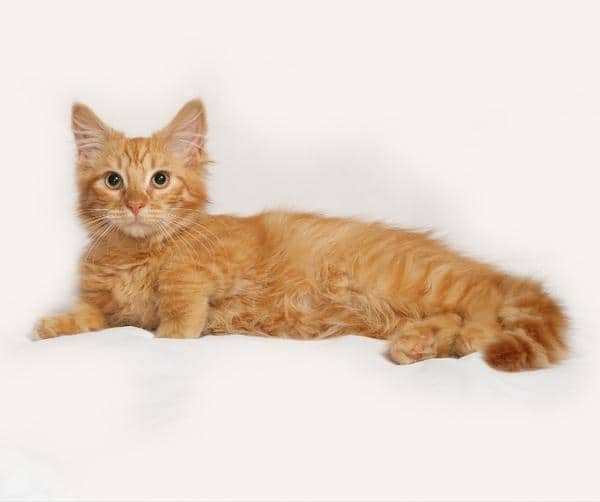Introduction: The Fascinating World of Orange Tabby Cats
Orange tabby cats are a beloved and popular breed known for their striking coats and unique personalities. These cats have captured the hearts of many cat lovers around the world, and it’s no wonder why. From their origins and history to their behavior and health considerations, there is much to explore and appreciate about these captivating felines.
Origins and History: Tracing the Roots of Orange Tabby Cats
The origins of orange tabby cats can be traced back to ancient times. These cats have been depicted in various forms of art and literature throughout history, showcasing their enduring presence in human culture. While the exact origins of orange tabby cats are unclear, they are believed to have originated in Egypt and were later brought to Europe by traders and explorers.
The Genetics Behind the Orange Coat: Understanding the Science
The vibrant orange coat of tabby cats is a result of specific genetic traits. The orange color is caused by a gene called the “O” gene, which is responsible for producing the pigment called pheomelanin. This gene is found on the X chromosome, which means that orange tabby cats are more commonly male. Female orange tabbies are less common and often have a combination of orange and black or gray patches.
Personality Traits: Exploring the Unique Behavior of Orange Tabby Cats
Orange tabby cats are known for their distinct personality traits. They are often described as friendly, affectionate, and outgoing. These cats are known to be social and enjoy the company of their human companions. They are often seen as the “life of the party” and are known for their playful and energetic nature. Orange tabbies are also known to be intelligent and curious, making them excellent companions for interactive play and mental stimulation.
Social Interaction: How Orange Tabby Cats Bond with Humans and Other Pets
Orange tabby cats are known for their strong bonds with their human owners. They are often described as loyal and loving, forming deep connections with their families. These cats enjoy being in the presence of their humans and will often seek out attention and affection. Orange tabbies are also known to get along well with other pets, making them a great addition to multi-pet households.
Playful and Energetic: Unveiling the Active Side of Orange Tabby Cats
Orange tabby cats are known for their playful and energetic nature. They have a natural curiosity and love to explore their surroundings. These cats enjoy interactive play and are often seen chasing toys, climbing cat trees, and engaging in other forms of physical activity. Providing them with plenty of toys and opportunities for play is essential to keep them mentally and physically stimulated.
Communication and Vocalization: Decoding the Language of Orange Tabby Cats
Orange tabby cats, like all cats, have their unique ways of communicating with their owners. They use a combination of body language, vocalizations, and facial expressions to convey their needs and emotions. For example, a purring orange tabby cat is often a sign of contentment and relaxation, while a flicking tail may indicate agitation or excitement. Understanding these cues can help strengthen the bond between cat and owner.
Health Considerations: Common Medical Issues in Orange Tabby Cats
While orange tabby cats are generally healthy, there are some common medical issues that they may be prone to. One such issue is obesity, as these cats have a tendency to overeat if not monitored closely. Regular exercise and a balanced diet are crucial in maintaining their overall health. Additionally, orange tabbies may be more susceptible to certain genetic conditions, such as hypertrophic cardiomyopathy (HCM) and polycystic kidney disease (PKD). Regular veterinary check-ups and screenings can help detect and manage these conditions early on.
Nutritional Needs: Feeding Guidelines for a Healthy Orange Tabby Cat
Proper nutrition is essential for the overall health and well-being of orange tabby cats. A balanced diet that includes high-quality protein, essential fatty acids, and a variety of vitamins and minerals is crucial. It is important to consult with a veterinarian to determine the specific dietary needs of your orange tabby cat based on their age, weight, and any underlying health conditions.
Grooming Tips: Maintaining the Lustrous Coat of an Orange Tabby Cat
The lustrous coat of an orange tabby cat requires regular grooming to keep it healthy and free from mats and tangles. Brushing their coat at least once a week helps remove loose hair and prevents the formation of hairballs. Additionally, regular nail trims, dental care, and ear cleaning are important aspects of their grooming routine. It is also essential to provide them with a clean litter box and regular flea and tick prevention.
Training and Enrichment: Stimulating the Intellect of Orange Tabby Cats
Orange tabby cats are intelligent and can benefit from mental stimulation and training. Training them to perform simple commands or tricks can help keep their minds active and engaged. Puzzle toys and interactive games are also great ways to provide mental enrichment for these cats. It is important to remember that positive reinforcement and patience are key when training orange tabby cats.
Conclusion: Celebrating the Charm and Beauty of Orange Tabby Cats
Orange tabby cats are truly remarkable creatures, with their unique coats, playful personalities, and strong bonds with their human companions. Their history, genetics, behavior, and health considerations make them a fascinating breed to study and appreciate. By understanding their needs and providing them with love, care, and enrichment, we can ensure that these beautiful cats live happy and fulfilling lives. So, let’s celebrate the charm and beauty of orange tabby cats and continue to cherish them as beloved members of our families.

